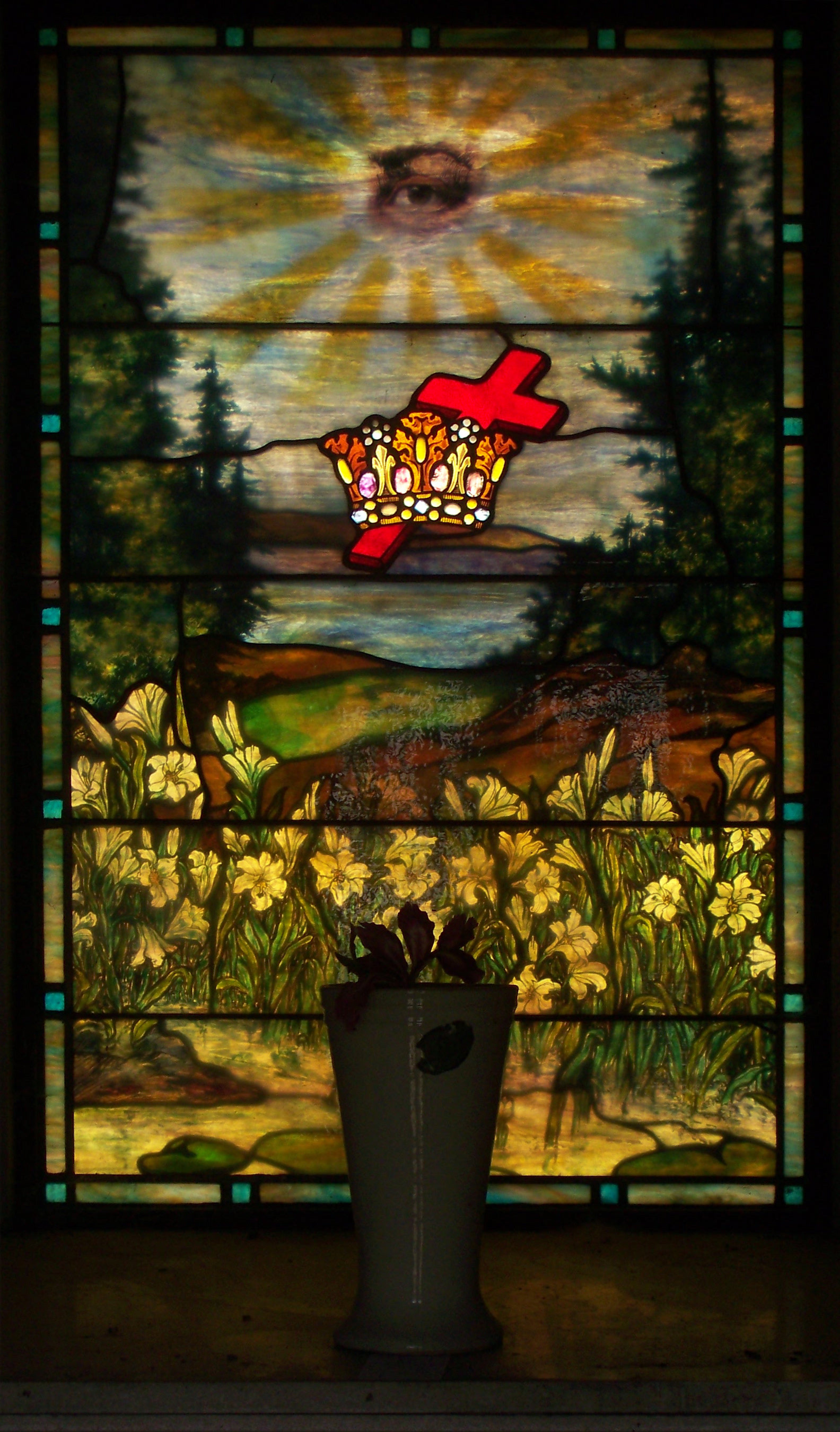This mausoleum seems to have received its first burial in 1927; if Father Pitt were to take a guess, he might say it had been waiting around empty for some time before that. There are none of the quirks of the advancing twentieth century: this is a timeless Doric temple, simple but correct. The stained glass inside is modestly attractive, though the cross is a bit out of place—it does not seem to be a thing that could naturally exist in the landscape. Old Pa Pitt is also not sure why there is a cheese hovering above it. The bronze palms on the doors are also notable.
-
Berryman Mausoleum, Homewood Cemetery
-
Hays Mausoleum, Homewood Cemetery
-
Junker-Duvall Mausoleum, Homewood Cemetery
A severely plain structure, almost like a quick sketch of a classical mausoleum; it is most notable for the stained-glass riot of symbols inside, including a floating eye that is disturbingly naturalistic. The mausoleum seems to have been built in 1921, when it received the remains of several Junkers and Duvalls.
-
Charles E. Golden Mausoleum, Chartiers Cemetery
Father Pitt guesses from the style that this mausoleum is from the middle twentieth century. The cemetery records (volunteer-maintained) give us only a row of question marks for the death dates of Mr. Golden and his family. The polished granite is impressive, and there is a good stained-glass window inside.
-
Sebastian Mueller Mausoleum, Homewood Cemetery
A standard Egyptian temple with a stained-glass view of the Pyramids. Mr. Mueller was buried here in 1938, but the mausoleum was probably built while he was still alive. Note the pristine bronze doors, by the way: much of the bronze in the Homewood Cemetery is regularly cleaned and not allowed to turn green.











